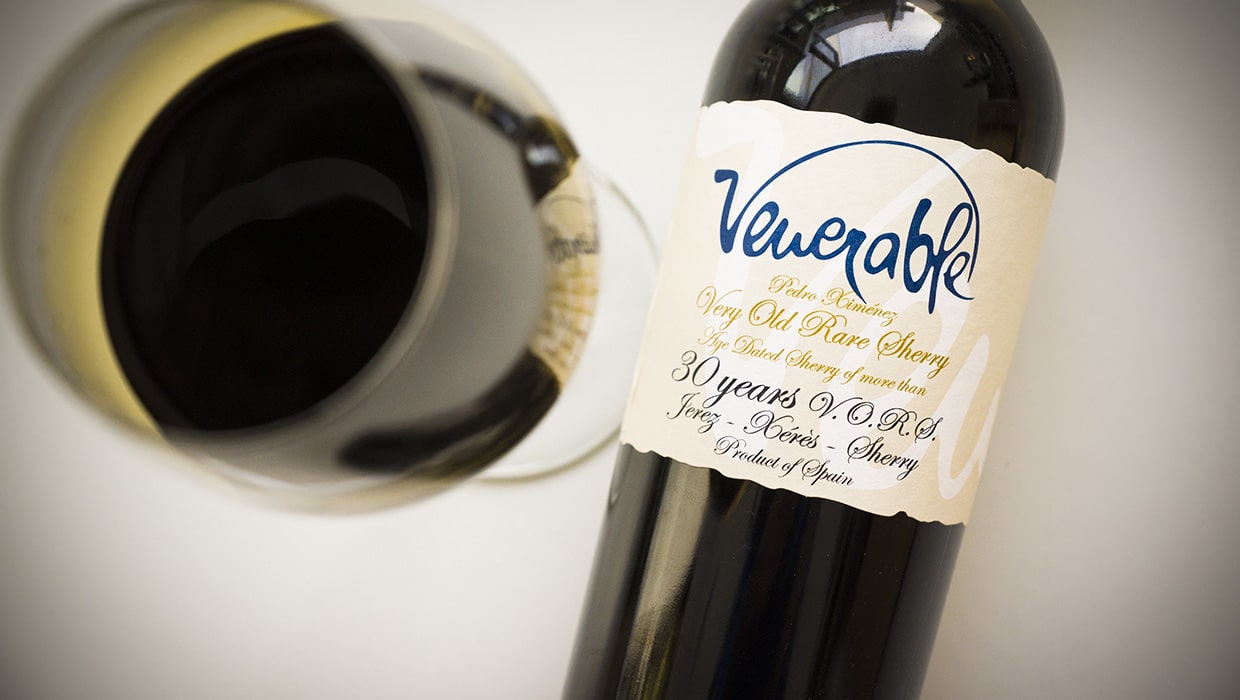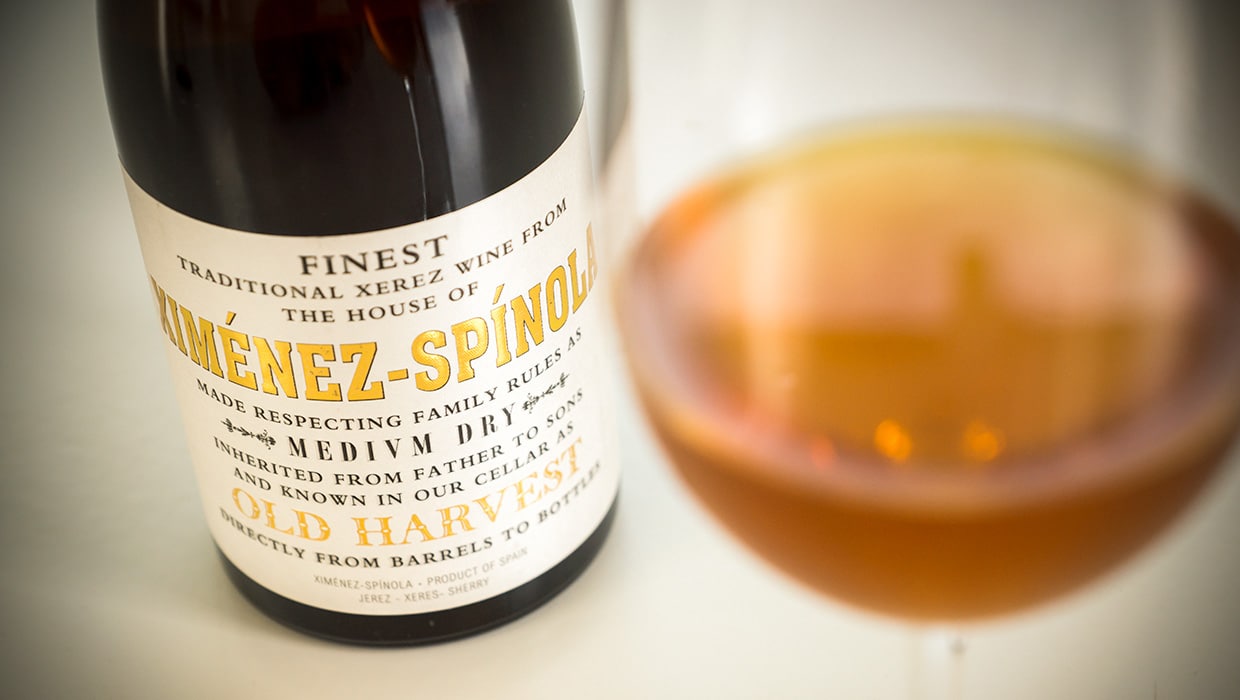
Pedro Ximénez
Pedro Ximénez (sometimes Pedro Ximinez, Ximénès, Jimenez or other variations) is a name used for naturally sweet dessert wines created with the grape variety with the same name. In order to use this name, the wine has to contain at least 85% of Pedro Ximénez grapes. The grapes are either picked very ripe and/or dried in the sun to concentrate. Commonly referred to as P.X., these are intensely sweet wines, especially when the grapes are dried in the sun (a process called asoleo).
While this process was also practiced in the Jerez-Xérès-Sherry region, nowadays the base wines for this type of sherry are mostly produced in the D.O. Montilla-Moriles since the climate there protects the grapes better from rotting (generally warmer and less humid). Montilla-Moriles creates the vast majority of P.X. wines within their own denomination, but part of them are them are transferred back to bodegas in Jerez for maturation, which allows them to be labeled as sherry.
The Pedro Ximenez grape variety is believed to be introduced in Spain by a soldier Pieter Siemens, although this story is debated
The amount of sugar in Pedro Ximénez wines is at least 212 g/l, but it will typically be between 300 and 400 grams of sugar per liter. It means the fermentation will be partial – actually the must can hardly ferment at all.
For more information on the name, the origins and the characteristics, read my article Pedro Ximénez grape: history and character. For more background information, see the website of the Consejo Regulador.

Medium dry Pedro Ximénez from Bodegas Ximénez-Spínola
Pedro Ximénez character
Classic Pedro Ximénez will display aromas and flavours of raisins, dates and dried figs, often combined with a spicy note and chocolate. The best examples not only display intense, ultra-sweet aromas but also balancing drier flavours of coffee, liquorice and spices. Older PX wine will have a higher acidity and much bigger elegance compared to overwhelming young wines. At a very high age (thirty years or even more) they can become quite savoury, with aromas of herbs, tar and smoke, without losing their sweet side.
Note that in Montilla-Moriles they also make a variety of dry wines from PX grapes (table wines as well as Fino, Amontillado, Oloroso…). As the grapes contain more sugars, these wines can reach high alcohol levels without the need to be fortified with wine distillates. In the sherry triangle it is less common to use PX grapes for dry styles of fortified sherry wines, but there is a growing tendency to produce table wines as well.
Appreciation
Young Pedro Ximénez can be a liquid bonbon, full of sticky sweetness, excellent with pure chocolate desserts, crepes or spicy cheese. It can also be used as a sauce over vanilla ice cream. They should be chilled to 10°C to balance the sweetness. The older examples are perfect with more delicate desserts, paté or blue cheese. These are best served around 12-14°C.
Pedro Ximénez sherry reviews
- Aurora Pedro Ximénez (Yuste)3.5
- Collection P.X. 12 years (Williams & Humbert)2
- Colosía Pedro Ximénez (Gutiérrez Colosía)3.5
- Don P.X. 1985 (Toro Albalá)4
- Don PX Convento 1946 (Toro Albalá)5
- Don PX Convento 1955 (Toro Albalá)4.5
- El Candado Pedro Ximénez (Valdespino)4
- La Bota de Pedro Ximénez 36 (Equipo Navazos)4
- La Bota de Pedro Ximénez 56 (Equipo Navazos)4.5
- Noe Pedro Ximénez VORS (González Byass)4
- Oxford 1970 P.X. (Dios Baco)3.5
- Pandorga 2014 (Cota 45)4.5
- Pandorga 2018 (Cota 45)4.5
- Pedro Ximénez 2020 (Callejuela)4
- Pedro Ximénez Clásico (Urium)3.5
- Pedro Ximénez de Añada 2008 (Alvear)3
- Pedro Ximénez Don Guido V.O.S. (Williams & Humbert)3.5
- Pedro Ximénez Murillo (Lustau)4
- Pedro Ximénez Vintage 2013 (Ximénez-Spínola)3.5
- PX Solera 1918 (Ximénez-Spínola)4
- Reliquia Pedro Ximénez (Barbadillo)4.5
- Sacromonte Pedro Ximénez (Valdivia)3
- St. George’s Pedro Ximénez 20121.5
- Venerable VORS (Osborne)4.5
- Viña 25 Pedro Ximénez (Pedro Domecq)4
- Viña 98 Pedro Ximénez (Álvaro Domecq)3
- Ximénez Spínola Delicado 20224.5






